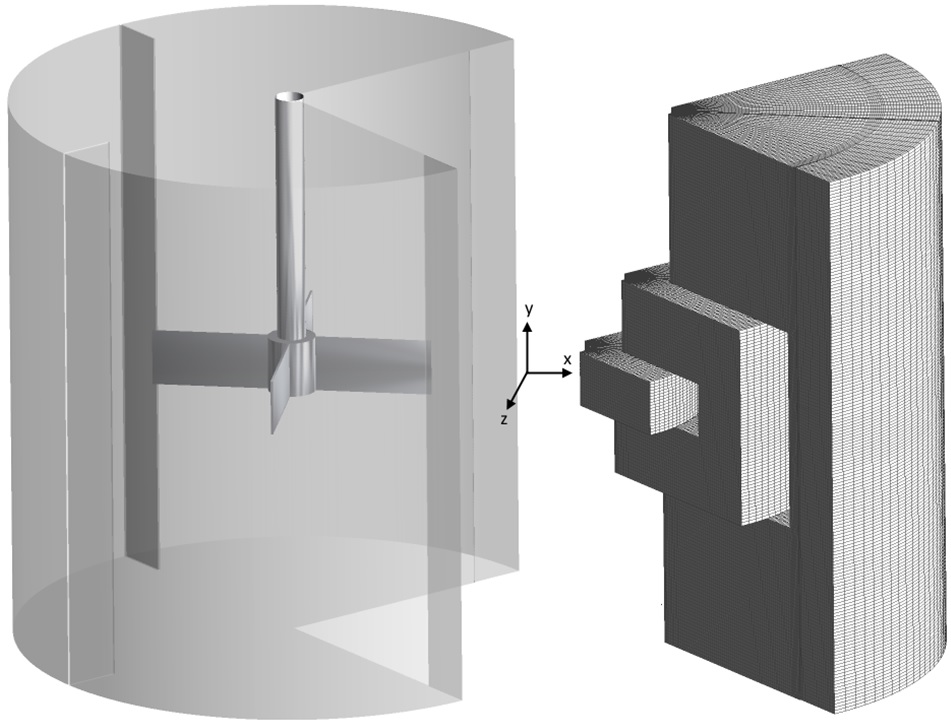 |
|
A computational fluid dynamics (CFD) study was performed to simulate the flow induced by a turbine of four flat blades in a stirred baffled-tank. The multiple reference frame approach is employed to model the impeller rotation. The work focuses specifically on investigating the influence of the surface position separating the rotating reference frame (RRF) and the static reference frame (SRF) regions over the numerical results reliability. Power number measurements were obtained to validate the CFD model. It was found that for laminar flow, the interface position between both regions does not have a substantial effect on numerical results. However, its position plays a substantial role as the flow regime increases; the higher this is, the larger the RRF must be. Finally, we employ the RRF-region dimensions obtained in turbulent conditions for reproducing satisfactorily experimental results of a published system.
Keywords: MRF approach, Rotating reference frame, CFD simulations, Stirred tank.
|
|
 |

